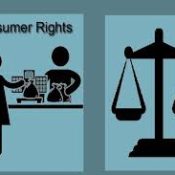
Turning Crisis into Comeback: A Strategic Insight into Bankruptcy and Insolvency Laws
In the ever-changing world of business, financial challenges are inevitable. Whether due to market volatility, operational setbacks, or economic downturns, even the most stable organizations can face distress. This is where Bankruptcy and Insolvency Laws play a transformative role — offering a structured, fair, and transparent mechanism to resolve financial crises while paving the way for recovery and growth.
The Insolvency and Bankruptcy Code (IBC), 2016, revolutionized India’s approach to financial distress management. It brought together multiple fragmented laws into a single, streamlined framework that promotes speedy resolution, creditor confidence, and business revival. The IBC aims not merely to punish failure but to encourage restructuring and turnaround, giving viable businesses a second chance to thrive.
Under this framework, the Corporate Insolvency Resolution Process (CIRP) allows financially distressed companies to reorganize under new management, protecting the interests of creditors and stakeholders alike. When revival isn’t feasible, liquidation proceedings ensure fair asset distribution in accordance with established legal priorities. Additionally, provisions for personal insolvency and bankruptcy extend protection and accountability to individuals, entrepreneurs, and guarantors.
A key feature of the IBC is its time-bound process, supervised by the National Company Law Tribunal (NCLT). This ensures efficiency, transparency, and reduced litigation delays — a major improvement over earlier systems. By fostering investor trust and financial discipline, the law has strengthened India’s reputation as a business-friendly and resilient economy.
Ultimately, Bankruptcy and Insolvency Laws represent more than financial recovery — they embody the principle of renewal and resilience. They remind us that failure is not the end, but an opportunity to rebuild stronger, wiser, and more sustainably.
All Categories
Recent Posts
Consumer Protection Law: Safeguarding Consumer Rights
Tags





